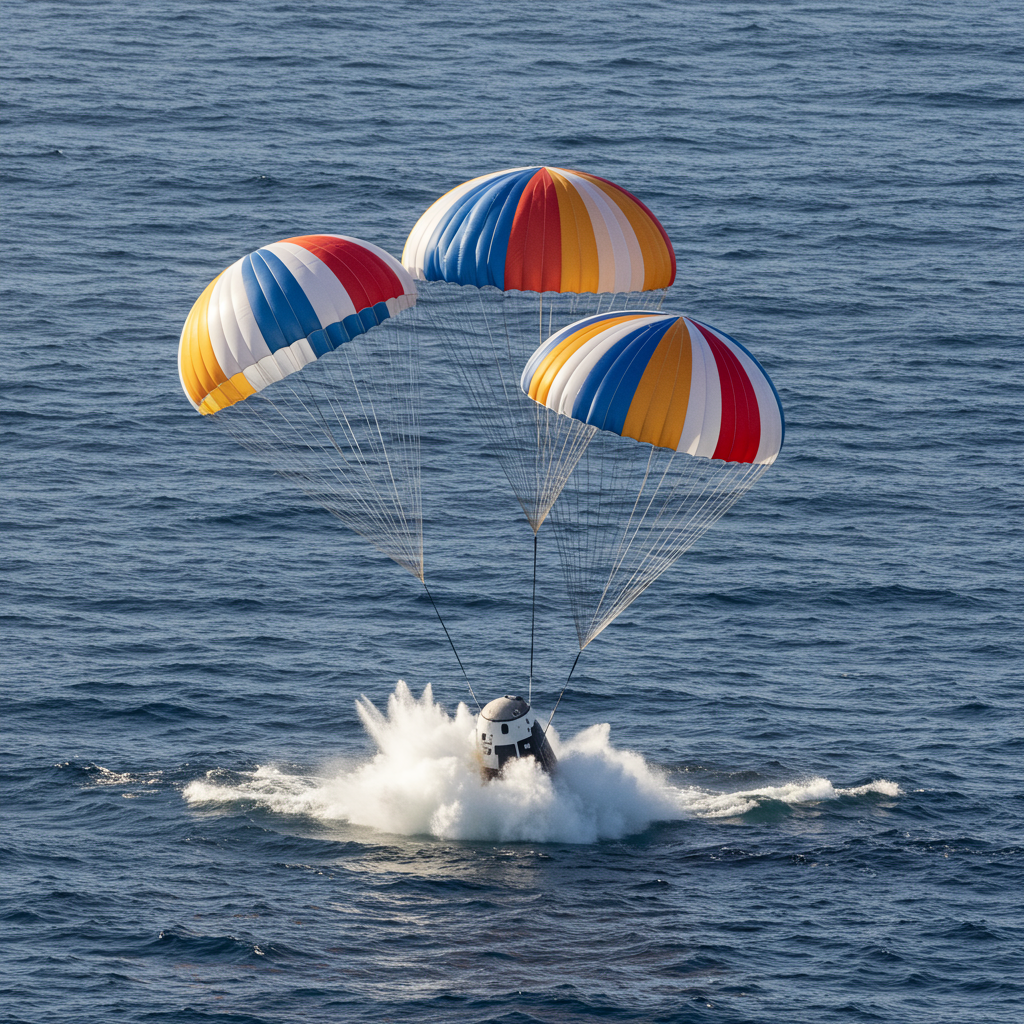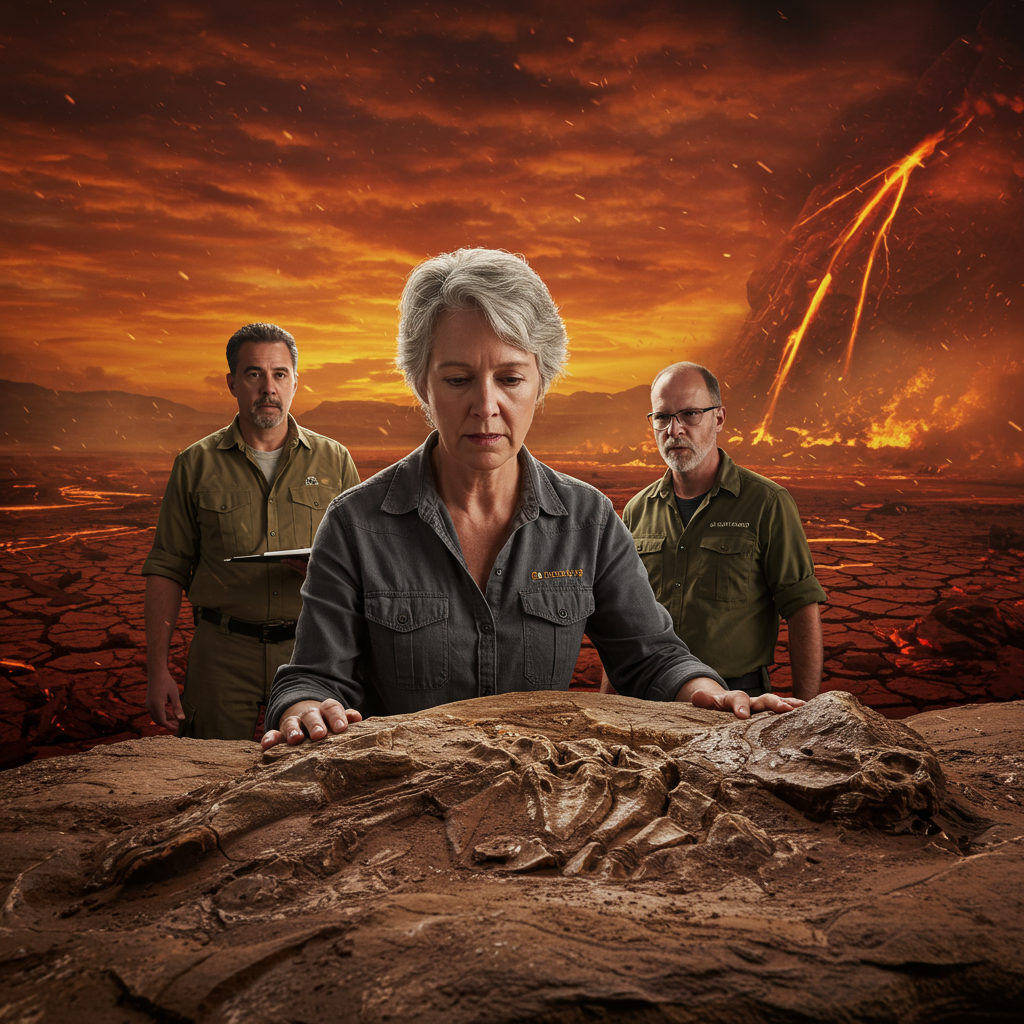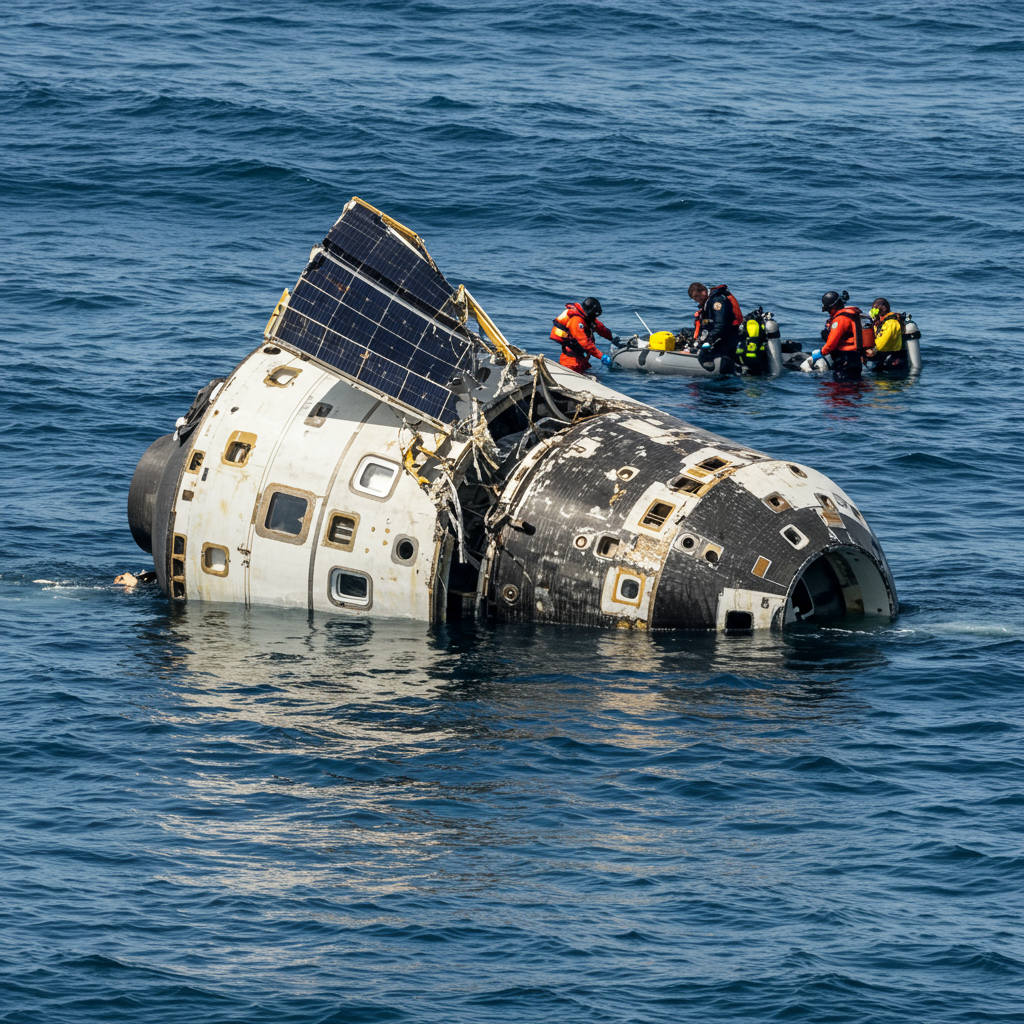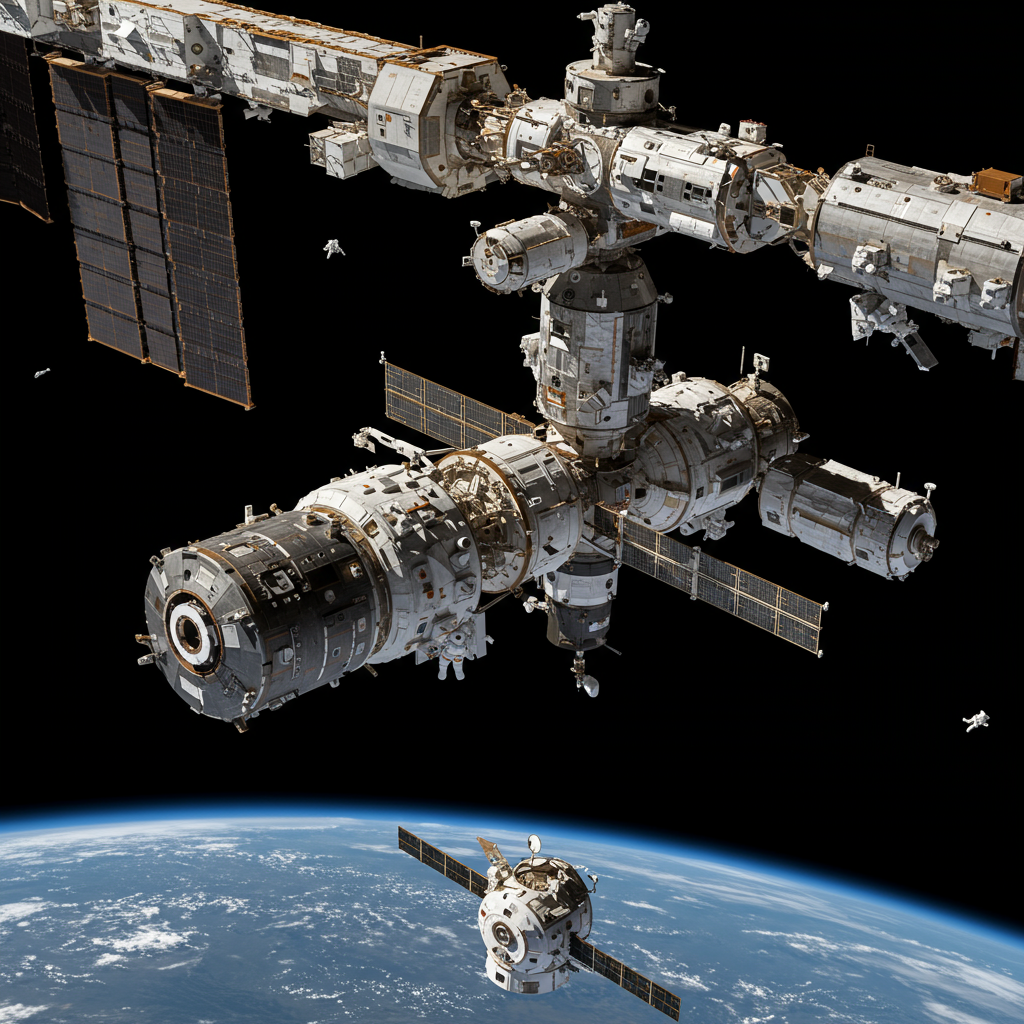The vastness of space gives way to Earth’s familiar blue as four intrepid astronauts have successfully completed their five-month mission aboard the International Space Station (ISS). On Saturday, August 9, 2025, the SpaceX Crew Dragon capsule, named Endurance, safely parachuted into the Pacific Ocean off the Southern California coast. This momentous splashdown concluded the Crew-10 mission, marking a pivotal moment in human spaceflight and a significant shift in return procedures for NASA crews. It’s a testament to global collaboration and the relentless pursuit of scientific discovery, underscoring what humanity can achieve when working in unison.
The Epic Journey Home: A Historic Pacific Splashdown
The return of the Crew-10 astronauts was not just another routine homecoming; it represented a strategic shift in SpaceX’s operational procedures. After undocking from the orbital laboratory on Friday, the Crew Dragon Endurance embarked on an approximately 17-hour journey back to Earth. As the capsule hurtled through the atmosphere, it endured extreme temperatures, reaching an astonishing 3,000 degrees Fahrenheit, before its parachutes deployed for a precise splashdown. This specific Pacific Ocean landing off the coast of Southern California was the first for a NASA crew in five decades.
Historically, SpaceX’s Commercial Crew Program missions typically returned to the Atlantic off Florida’s coast. However, Elon Musk’s company recently implemented a new policy. All Dragon missions, both crewed and uncrewed, will now conduct West Coast reentries. This crucial decision aims to significantly mitigate the risk of falling space debris impacting populated areas, enhancing safety for communities below. While this was the first Commercial Crew Program Pacific landing, private missions like Fram2 and Axiom 4 had already pioneered these West Coast homecomings earlier in the year, setting the precedent. The last time NASA astronauts landed in the Pacific was during the iconic 1975 Apollo-Soyuz mission, a symbol of Cold War détente.
Meet the Valiant Crew of Crew-10
The four individuals who spent nearly five months orbiting Earth represent a truly international collaboration in space exploration. The Crew-10 mission featured a diverse team of highly skilled professionals. Leading the charge as mission commander was NASA astronaut Anne McClain. Alongside her was fellow NASA astronaut Nichole Ayers, serving as pilot for the Crew Dragon. They were joined by Takuya Onishi from the Japan Aerospace Exploration Agency (JAXA) and Kirill Peskov, a cosmonaut from Russia’s Roscosmos.
For both Nichole Ayers and Kirill Peskov, this mission marked their inaugural journey into the vastness of space. Anne McClain and Takuya Onishi, however, were undertaking their second trip to the International Space Station, bringing valuable experience to the crew. Onishi notably served a period as commander of the ISS’s Expedition 73 before transferring command to cosmonaut Sergey Ryzhikov just days before their departure. Their collective expertise and dedication were paramount to the mission’s success.
A Mission of Groundbreaking Science and Global Unity
During their extensive tenure aboard the International Space Station, the Crew-10 astronauts were far from idle. They dedicated a substantial portion of their time to conducting over 200 scientific experiments. These critical endeavors are vital for preparing humanity for future deep-space exploration, extending beyond the confines of low-Earth orbit. Their studies spanned a wide array of disciplines, pushing the boundaries of human knowledge and technological capability.
The research encompassed investigations into space-induced mental and physical changes in astronauts, providing crucial data for long-duration missions. They also explored complex blood flow dynamics from the brain to the heart, deepening our understanding of human physiology in microgravity. Experiments on plant growth in space and the behavior of cells were also part of their agenda. Additionally, they investigated future lunar navigation techniques, directly contributing to upcoming lunar and Martian missions. Prior to leaving the station, Commander McClain offered a poignant reflection. She acknowledged “some tumultuous times on Earth” and expressed the crew’s hope. She stated that their mission would “be a reminder of what people can do when we work together, when we explore together.”
Overcoming Adversity: The Starliner Saga’s Crucial Context
The Crew-10 mission carried an added layer of importance due to unforeseen circumstances involving another spacecraft. These astronauts launched in March with a specific, time-sensitive objective: to replace two NASA astronauts who had become unexpectedly stranded aboard the ISS. Butch Wilmore and Suni Williams, the test pilots for Boeing’s Starliner capsule, had originally intended a week-long test flight. However, a series of malfunctions with the Starliner spacecraft left them stuck at the space station for more than nine months. This extended stay was far beyond their planned duration, creating a challenging situation for NASA.
Responding to the Starliner’s issues, NASA made a decisive move. The agency ordered Boeing’s new crew capsule to return to Earth empty, without its crew. Subsequently, Wilmore and Williams were reassigned to a SpaceX return flight. They departed the ISS shortly after McClain and her Crew-10 team arrived to take their places, ensuring continuous human presence. Butch Wilmore has since retired from NASA following his extended orbital ordeal. The successful deployment and return of Crew-10 therefore served as a critical solution to a complex logistical and safety challenge, highlighting the resilience and adaptability required in human spaceflight.
The Evolving Landscape of Commercial Spaceflight
The successful conclusion of the Crew-10 mission further solidifies SpaceX’s pivotal role in the future of human space exploration. This mission represented the 10th operational astronaut flight conducted by SpaceX for NASA’s Commercial Crew Program (CCP). This groundbreaking initiative, launched in 2020, has been instrumental in ending NASA’s previous reliance on Russia for astronaut transport to the International Space Station. This dependency had emerged after the retirement of the Space Shuttle program in 2011, making the CCP a cornerstone of U.S. space independence.
Before Crew-10 departed, the four-person Crew-11 mission had already arrived at the ISS on August 2. The departing astronauts spent several days providing comprehensive handover briefings to their replacements. The Crew-11 team, including NASA astronauts Zena Cardman and Mike Fincke, JAXA astronaut Kimiya Yui, and Russian cosmonaut Oleg Platonov, will continue the vital scientific and maintenance work. Looking ahead, the ISS, which has maintained a continuous human presence since October 31, 2000, is slated for retirement around the end of the decade. In anticipation, NASA is actively encouraging and supporting commercial companies to develop and launch new space stations. These private ventures are envisioned as future orbital laboratories for agency astronauts in the coming decade, marking a new era of space exploration.
Life After Orbit: Desires and Debriefs
Upon their safe return, the astronauts expressed both relief and simple human desires after months in microgravity. Commander Anne McClain looked forward to “doing nothing for a couple of days” back home in Houston. Her crewmates had more tangible wishes: high on their list were hot showers and juicy burgers. The immediate moments after splashdown are critical. All four astronauts were observed to safely exit the capsule with assistance from recovery teams, with McClain even offering a fist pump. They were able to stand and walk shortly after exiting before being secured for further medical evaluations.
Post-splashdown procedures are meticulous. The crew members undergo thorough medical examinations immediately upon reaching shore. They are then transported by helicopter and plane to be reunited with their families, a moment of profound significance. Beyond these immediate evaluations, a long-term analysis of both the crew’s health and the extensive data from the experiments they conducted will commence. This comprehensive study is essential for understanding the prolonged impacts of space and the absence of Earth’s normal gravitational pull on the human body, paving the way for even longer duration missions in the future.
Frequently Asked Questions
What was the primary purpose of the Crew-10 mission to the ISS?
The Crew-10 mission had a dual purpose: to conduct extensive scientific research and to relieve two NASA astronauts who were stranded on the International Space Station due to malfunctions with Boeing’s Starliner spacecraft. During their five-month stay, the crew performed over 200 experiments, focusing on human physiological changes in microgravity, blood flow studies, and advanced lunar navigation techniques. Their timely arrival also allowed Butch Wilmore and Suni Williams, the Starliner test pilots, to finally return to Earth.
Why did SpaceX shift its astronaut splashdown locations to the Pacific Ocean?
SpaceX transitioned its Crew Dragon splashdown locations from off the coast of Florida to the Pacific Ocean off Southern California primarily to enhance safety and reduce risk. This strategic change aims to mitigate the possibility of spacecraft debris falling on populated land areas during re-entry. The Crew-10 mission marked the first time a NASA crew returned to the Pacific in 50 years, signaling a permanent operational shift for SpaceX’s crewed and uncrewed Dragon missions.
How does the Crew-10 mission and the Starliner situation impact the future of human space exploration?
The Crew-10 mission’s success, particularly in relieving the stranded Starliner astronauts, reinforces the critical role of commercial partners like SpaceX in maintaining human presence in orbit and ensuring astronaut safety. The Starliner’s issues underscore the complexities and challenges of developing new human-rated spacecraft, while also highlighting NASA’s robust Commercial Crew Program, which has ended its reliance on Russia. Looking forward, these experiences will inform the development of next-generation commercial space stations and deep-space missions as the ISS nears its retirement.
A Glimpse into Tomorrow’s Orbit
The successful return of the Crew-10 astronauts encapsulates the current dynamism of human spaceflight. From scientific breakthroughs achieved aboard the orbital laboratory to the logistical complexities of crew rotation and the evolution of commercial space endeavors, every mission contributes to humanity’s push beyond Earth. The Pacific splashdown, the significant research, and the crucial support for the Starliner situation all highlight the resilience, innovation, and international cooperation that define our ongoing journey among the stars. As the International Space Station prepares for its eventual retirement, the lessons learned and the partnerships forged by missions like Crew-10 are paving the way for an even more ambitious future in space exploration.




